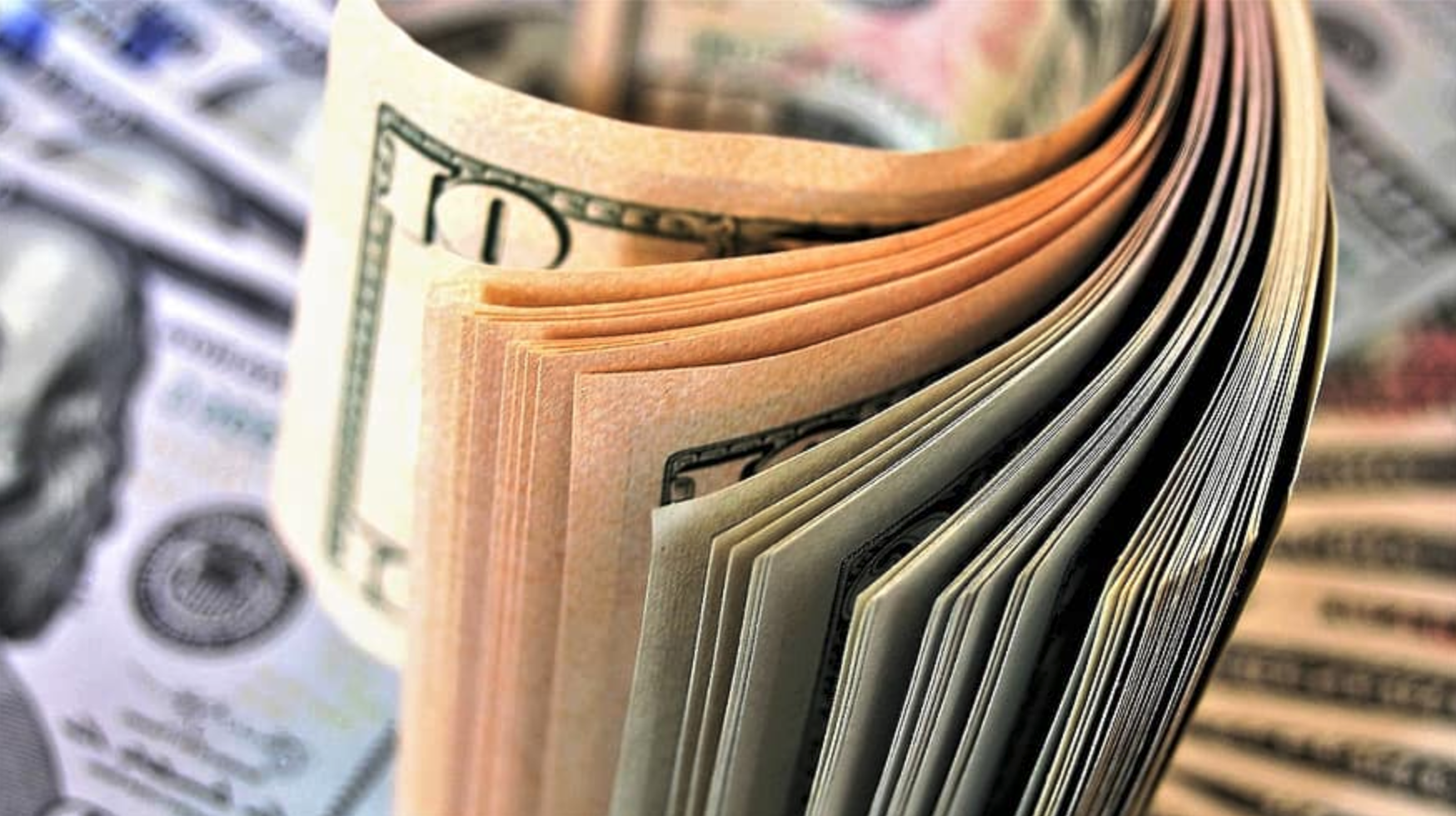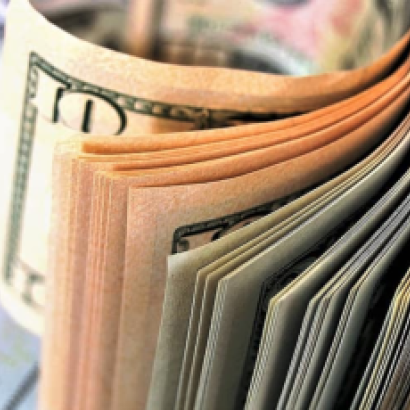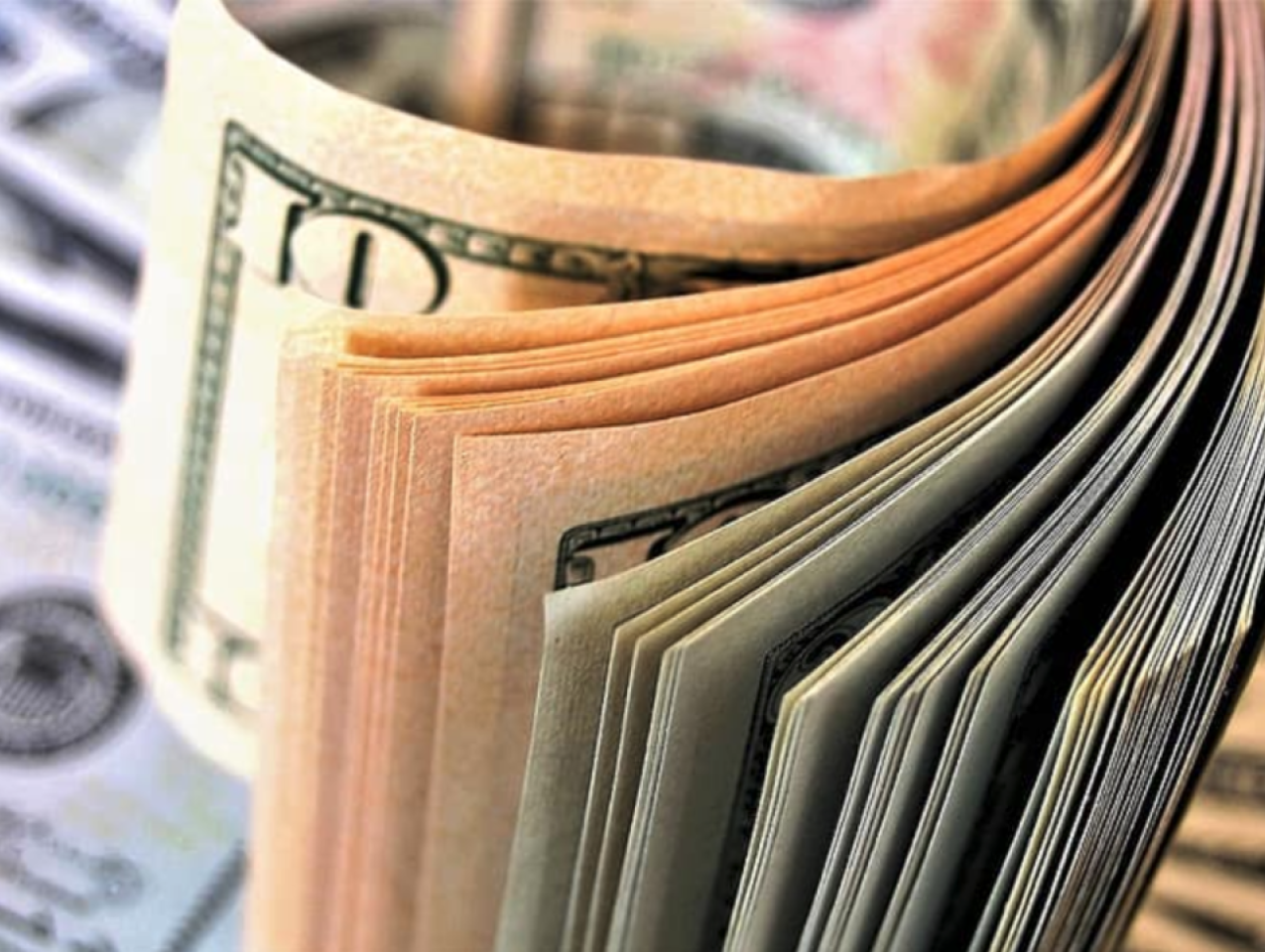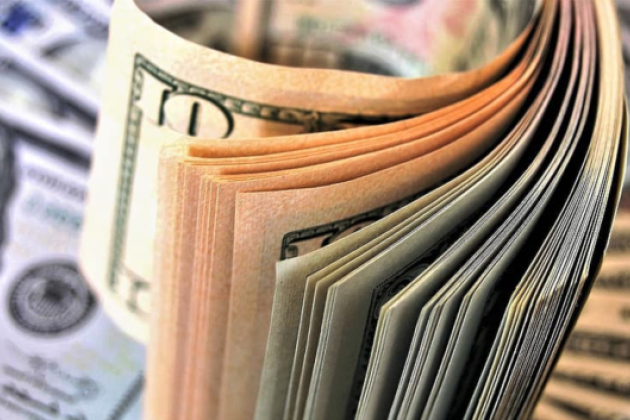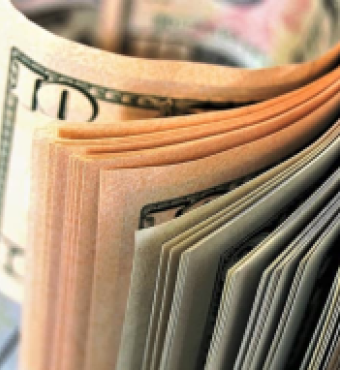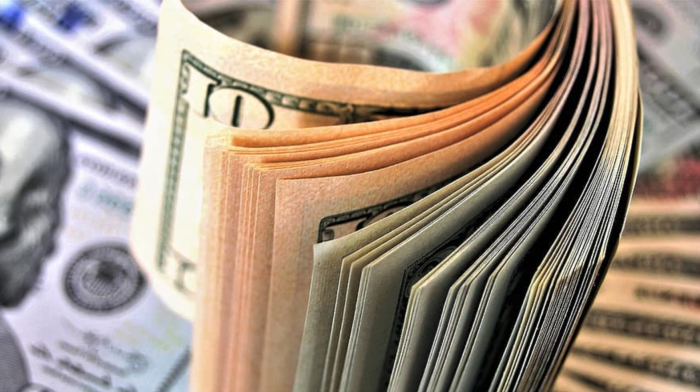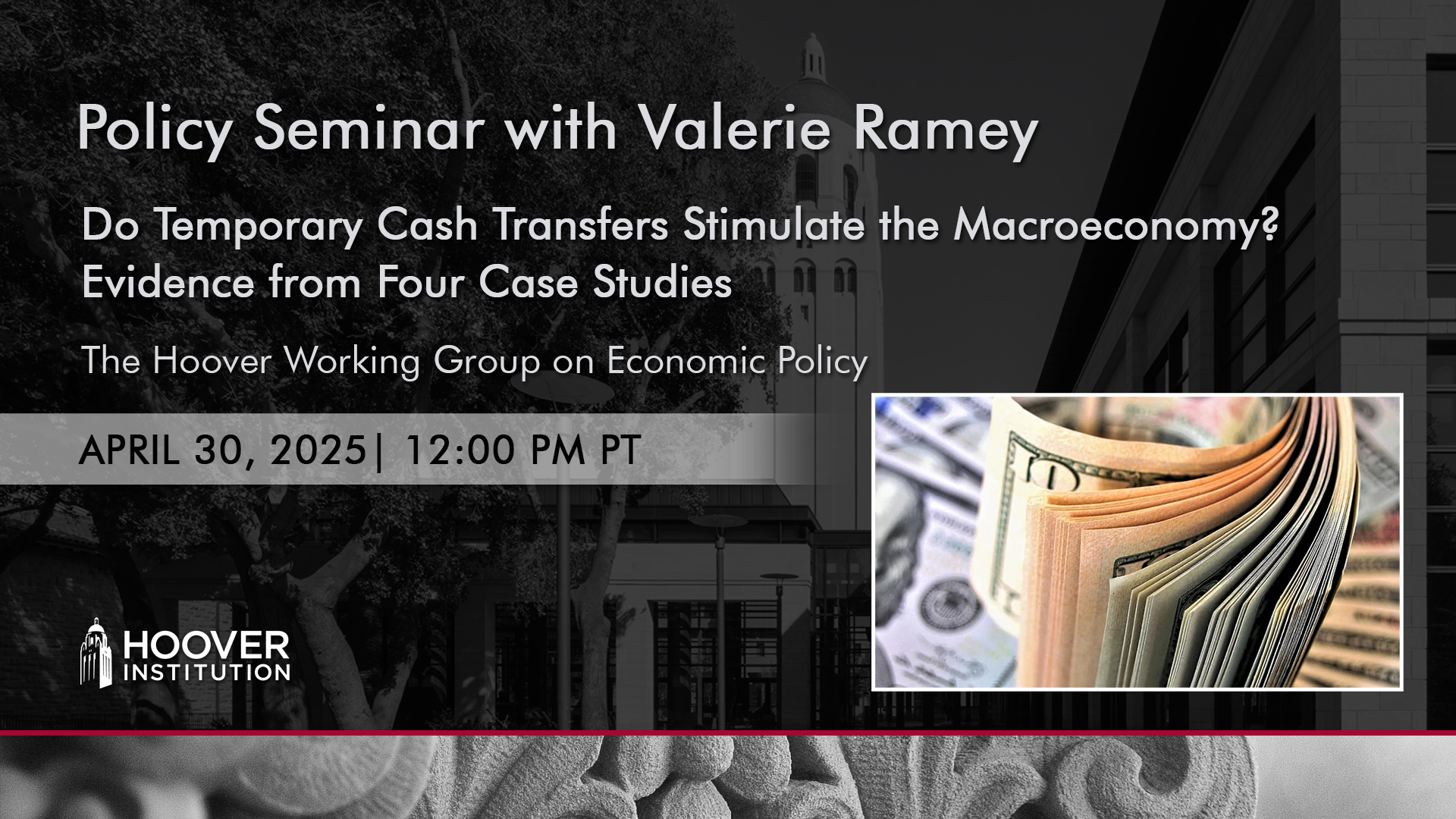PARTICIPANTS
Valerie Ramey, John Taylor, Mohamad Adhami, Annelise Anderson, Hoyt Bleakley, Michael Bordo, David Brady, Pedro Carvalho, Steven Davis, Abhi Desai, David Figlio, Rick Geddes, Oliver Giesecke, Tyler Goodspeed, Bob Hall, Rick Hanushek, Jon Hartley, Greg Hess, Robert Hodrick, Laurie Hodrick, Nicholas Hope, Bobby Inman, Suhani Jalota, Ken Judd, Evan Koenig, Roman Kraussl, Jeff Lacker, Alla Laguduava, Nelson Layfield, David Laidler, Andrew Levin, Ross Levine, John Li, Jacob Light, Lilia Maliar, David Neumark, Stephen Redding, JR Scott, Krishna Sharma, Richard Sousa, Tom Stephenson, Jack Tatom, Mark Tendall, Marc Weidenmeier, Simon Weiderhold, Oliver Xie, Alexander Zentefis
ISSUES DISCUSSED
Valerie Ramey, senior fellow at the Hoover Institution, discussed “Do Temporary Cash Transfers Stimulate the Macroeconomy? Evidence from Four Case Studies.”
John Taylor, the Mary and Robert Raymond Professor of Economics at Stanford University and the George P. Shultz Senior Fellow in Economics at the Hoover Institution, was the moderator.
SUMMARY
This paper re-evaluates the effectiveness of temporary transfers in stimulating the macroeconomy using evidence from four case studies. The rebirth of Keynesian stabilization policy has lingering costs in terms of higher debt paths, so it is important to assess the benefits of these policies. In each case study, I analyze whether the behavior of the aggregate data is consistent with the transfers providing an effective stimulus. Two of the case studies are reviews of evidence from my recent work on the 2001 and 2008 U.S. tax rebates. The other two case studies are new analyses of temporary transfers in Singapore and Australia. In all four instances, the evidence suggests that temporary cash transfers to households likely provided little or no stimulus to the macroeconomy.
To read the slides, click here
To read the paper, click here
WATCH THE SEMINAR
Topic: Do Temporary Cash Transfers Stimulate the Macroeconomy? Evidence from Four Case Studies
Start Time: April 30, 2025, 12:00 PM PT
>> John Taylor: Okay, let's get started. We're very happy to have Valerie Ramey speak to us today about a whole wide range of things. The big title is Do Cash Transfer Stimulate the Macro Economy. That's still a title, but it's in the November 24th Mundell Plumbing Lecture, and it has elements from the April 25th Phillips Lecture, rethinking Keynesian Fiscal Stimulus.
So, Valerie, welcome. You're here. You have a big crowd. You have a lot of interest in this subject, okay?
>> Valerie Ramey: Okay, all right, well, thank you very much, John. So it's always a pleasure to be at the Economic Policy Working Group, and then it's a particular pleasure to be able to present.
So, as John indicated, this is sort of a mashup of two lectures, but they are an outgrowth of my thinking since at least 2018, when I started writing my Journal of Economic Perspectives, the Renaissance, and Fiscal Research. They're also inspired by my experience. Last year, I was the chair of a committee that did an external evaluation of the Fiscal Affairs Department, the IMF.
And reading hundreds of their papers and policy things, it really struck me how difficult it is for policymakers when they have to decide what estimate to use from the literature, because there is just a wide range of estimates. So one of my goals, even since 2011, has been to try to reduce that range by saying that this estimate is more likely and that estimate is less likely.
So that's what this is talking about and then this is gonna particularly focus on cash transfers. So, as numerous countries used Keynesian fiscal stimulus during the global financial crisis and during COVID, and temporary transfers were important, although certainly not the entire part of a lot of these stimulus packages.
And in my survey in the Journal of Economic Perspectives, when I was saying what we knew about multipliers there, I talked about government purchases, taxes, and all sorts of things. When I got to transfers, I noted that there was not much aggregate time series evidence for sizable multipliers for temporary transfers.
Though calibrated, New Keynesian models suggest they can be high, particularly if they're targeted and if monetary policy is accommodative. And the very few studies at the aggregate level were, for example, Romer and Romer's narrative study of increases in the generosity of social security, which actually wasn't that temporary in most cases.
But they didn't find much effect. So here I assess the evidence on the macro effects of standard transfers, and I argue that these measures in practice. In these case studies that I look at here, provided little or no aggregate stimulus in advanced economies. So I have not yet done case studies in developing economies.
So that's why I put the in advanced economies there. So as an outline, what I'm gonna talk about. So first I'm gonna step back and take a much more bird's eye view. And this is, I did this a little bit in the Mundell Fleming lecture, but much more in the lecture I gave a couple weeks ago at the London School of Economics.
So I'm gonna start by thinking about this sort of waning and waxing of Keynesian ideas on academic, macro, and policymakers. And so I'll talk about the rise, fall and rebirth of Keynesian fiscal stimulus. And there's sort of a key theme here, which is that there are just as there are business cycles, there are cycles in the Keynesian influence.
And it's due to an interplay of what I say, three key elements, which is events. So this could be, say, the global financial crisis theories and empirical evidence. And sometimes the events actually generate a key part of the empirical evidence. Then I'm going to just remind everybody of the debt consequences briefly of Keynesian fiscal stimulus.
Then I'll look at whether transfers have been an effective macroeconomic stimulus based on these four case studies. And finally, just some summary and conclusions. All right, so the rise and fall and rebirth of Keynesian fiscal stimulus. Little Monty Python stuff there, okay. All right, so as most people know, the great, because of the Great Depression, that's what inspired John Maynard Keynes to write his General Theory, all right?
It looked, the standard classical theory just didn't seem to explain what was going on. And so that's why we got this very novel theory and a key part of it that I'm focusing on here because it's so important for the transfers. Transfers part is that consumption depends on current disposable income.
This is what we teach in our undergraduate textbooks. He thought that the marginal propensity to consume MPC for short, was around 0.8, which in a simple closed economy model with no changes in interest rates will give you a multiplier of five. Now we thought that multipliers were likely lower between two and three in the UK and the US in the UK because it was so open.
And so you have a lot of leakages due to trade in the US it was actually based on some data that Kuznets had sent and him about GDP and investment. And he did some statistical work on that and that's why he thought it was between 2 and 3 there.
Now then we got evidence. So there was some econometrics done at that time, which is pretty impressive given that they didn't even have calculators, right? But also World War II experience. So that was an event, although it was experiential event that everybody could see that geez, government spending went up and economies got lifted out of the Great Depression.
So that convinced economists and policymakers that manipulating government spending and taxes could stabilize business cycles. So these ideas were dominant from the 1940s through the 1960s and it was one of the tools in the toolbox for policymakers for stabilizing business cycles. What led to the fall of Keynesian fiscal stimulus?
Basically in the last quarter of the 20th century, after the 1970s, monetary replaced fiscal policy as a stabilization tool, why? Well, new theories and new evidence. First of all, the new theories, the permanent income hypothesis Milton Friedman augmented with rational expectations by Bob. Implied that there was a very small NPC out of transitory income fees because consumers wanted to smooth their income.
So you should spend very little out of just a transitory amount. And then the Freeman Schwartz evidence. So here's where empirical evidence comes in which is that monetary policy can have powerful effects on output. And there was something else, which was just sort of practical experiences. People realized that there were different speeds of policy response because fiscal has so many other goals that it can take a long time for Congress to decide to actually pass something.
And particularly back then they've gotten quicker more recently. But monetary policy is very nimble. And so that's why there was this big shift from Keynesian fiscal stabilization to monetary. Now it's interesting undergraduate textbook continued to discuss fiscal multipliers. I went through my bookshelf from my formative days. These books, even Bly, Sharda, Fisher, do not mention multipliers now, actually Sargent did in one foot.
Footnote where he said this partial derivative in the past had the name multiplier. That was it. Many textbooks were only about monetary policy. Woodford's, right? There were no multipliers in there. All right, so that was, you know, the low point of Keynesian stuff. So then we got a rebirth.
And so here's where events, the global financial crisis suddenly come back in zero lower bound, constrained monetary policy. So they had to dust off the old Keynesian fiscal stimulus playbooks. But by that time, there was very little research on the size of fiscal multipliers. So when Matthew Shapiro and I wrote our paper in the late 1990s in Carnegie Rochester, we didn't even say the word multiplier.
We were looking at the effects of government spending on both because it was a reallocation shock. And we were trying to distinguish whether neoclassical or Keynesian theories were better at describing the economy. But we didn't even calculate a multiplier because that was very old fashioned. So nobody was sure what the macro effects of the stimulus would be.
And it's thinking about this time because I got a lot of calls from reporters that when Josh Rao had his fiscal conference a month or two ago, I suggested that conference that we come up with the Hoover playbook, so that we have all this stuff ready when policymakers come to call kind of thing.
So that's what I'm trying to do a little bit here. So these events led to what I call in my Journal of Economic Prospectus paper, a renaissance in fiscal research. As a result, the handbook of macro 2016 had more than, not as a result of mine, as a result of us realizing we didn't know enough.
More than 125 mentions of multipliers, and they weren't all in my chapter. So why do many economists currently believe that Keynesian stimulus is effective? All right, well, since the 1980s, actually there was this nice little literature that received some attention, but maybe not as much as it should have, although it continued and now has become very active.
Many of these papers estimated MPCs out of temporary income were higher than those predicted by the permanent income hypothesis. And there's just a list of a lot of the names who had done this. Now, initially they were simply testing the permanent income hypothesis, but then at some point they pivoted to their finding of a non zero beta on that anticipated income to interpreting that as an mpc.
Okay, Turns out that that was a problem, but they were getting really significant values of this beta. Now here are some examples of the high estimated MPCs. So for example, 2001 rebate, Parker and the team just on non-durables was getting MPCS between 0.375 and 0.66. 2008 rebate, again, Parker and his team, for total consumption between 0.7 and 0.9.
There's a wonderful natural experiment that I'll discuss in detail. In Singapore, the MPC for total consumption was 0.8. And then there were the Norwegian lottery winners where the total consumption MPC was 0.5 to 0.7. So a lot of these are in the range that Keynes initially said. So when people see that, policymakers and everybody says, wow, they're gonna go out and spend all of these repeats, it's really, really high.
Just what Keynes told us. Now these high micro MPC estimates from all these wonderful household studies then generated some new theories of household behavior. So initially, these were not general equilibrium. So Kaplan-Violante is an example and Huntley and MichelangelI is another example. This then led to new macro models with heterogeneous agents, some with high MPCs because of myopic behavior, incomplete markets and/or financial rigidities.
And Adrian Auclert is first on the list alphabetically for all of the people who've done really amazing work, not only doing rigorous work with these Hank models, heterogeneous agent, new Keynesian models, but also to simplify them enough so that people who don't wanna do a lot of computation could still use the insights from them.
So these macro models calibrated with those high macro MPCs imply sizable multipliers. So in response, of course, policymakers always love an excuse to spend a lot. You know, they adopted gigantic stimulus packages, particularly in the US in the various crises that have struck the economy. So what are the debt consequences of Keynesian fiscal stimulus?
So virtually all the stimulus packages were deficit finance. And contrary to some theoretical arguments, deficits so far don't appear to have financed themselves except through inflation. Inflation has been very effective at financing part of it. And in fact every round of Keynesian stimulus has led to a ratchet up, what I call a ratchet up effect on debt to GDP ratios.
So here's an example. This is gross general government debt as a percent of gdp. It's from the World Economic Outlook from the imf. This shows advanced economies in the European Union to start with the vertical lines. The first one is 2008 and the second one is 2020, just so you can see the main first year of the two crises.
And you can see in each case actually debt to GDP ratios were sort of going down and then global financial crisis hits and they go up. And in advanced economies the debt to GDP ratio didn't go back down, it just plateaued there until the next crisis and the next gigantic round of stimulus.
And up they go. 2020. Now we do see some coming down. That's courtesy of inflation. Inflation's great for getting down the debt to GDP ratio if people don't anticipate it, of course, and then there's still going to be an upward path for advanced economies. European Union is at a lower level, but you're seeing a lot of this.
The European Union did come down quite a bit after the peak, after the global financial crisis because they did some pretty painful fiscal austerity. Here's the UK and the us, Same kind of graph, percent of gdp, the us. Those are not on the same scale as the others notice.
Well, the others are up to 150 to 130. This one's 40, whatever to 140. So the US was the biggest spender, the highest, most, the greatest increases in debt to GDP ratios. Absolutely no regression undoing that ratchet up effect except in the case of inflation and of course us.
The US is on an unsustainable death path. So there are big costs to this and I'm not even gonna mention cuz I don't have time that if we instead raise taxes, most of the multiplier, as evidence suggests that those multipliers are minus two to minus three, so it's very big cost.
Was it worth it? Have transfers been an effective macroeconomic stimulus? So in some earlier work in 2019, it was actually a discussion of a paper by Auerbach and then with Jake Orchard and Johannes Wieland and two papers, one forthcoming QJE and the other in EJ. And then in my IMF Economic review, which is this Wendell Fleming lecture, I conduct a series of what I call historical macro plausibility case studies.
And I find little or no evidence of macro effects, all right, so I'll review four case studies. Very briefly, the 2008 and 2001 US rebates and, and brief, because I've already presented on those here and if you want to see more, one can look at the papers then.
I wanted to do 2 non us ones for my IMF talk since they're international. So I chose Singapore and Australia for several reasons, so particularly in Singapore, one of the leading household studies that found high NPCs was for the Singapore National Natural experiments. I wanted to look there and then also Australia.
And it's also interesting that these are small open economies. And, and so there are, there are interesting Hank kind of results for those. All right, so.
>> Speaker 3: No macro effects means no effects on the real economy.
>> Valerie Ramey: Very good. Yes, yes.
>> Speaker 3: Inflation is.
>> Valerie Ramey: Inflation is a macro effect, you're absolutely right.
I should say, real macro effects, that's very important. Yes. Because we even find relative price effects from those. Yes. No macro stimuli. Well, yeah, there's ways to say it. Okay, just a couple of graphs, 2008 U.S Rebates, these were, this was during the Bush administration. They sent out really big checks.
They also showed that at that time Congress could move very quickly to do a fiscal stimulus. You could see it in the aggregate data, there's aggregate real disposable income. You don't have to guess where the fiscal stimulus was. Most of it went out from May through July. Big spike.
So then what happened to aggregate consumption? That's the blue line. Disposable incomes, the green line, Aggregate conceptions, the blue line, these data were available back then. These haven't been changed much from revisions. And that's why Marty Feldstein and John Taylor did some simple analysis with the macro data and they concluded that the MPCs must have been low.
So where, what happened, well, a few years later, influential new micro estimates appear. Parker and co-authors estimated these micro MPCs. It was a great natural experiment, they added rebate and they collected the data and you had to do it in real time. So it's just great what they created here.
They added rebate questions to the consumer expenditure surveys and Nielsen surveys, great natural experiment because they used the timing, because these rebates were given out overseveral months. And they used randomness and Social Security numbers, they used what was then standard applied micro methods that had been used in thousands of papers.
Two way fixed effects exploiting difference in timing. And they estimated these very high MPCs, 0.5 to 0.9 on total consumption. Now policymakers and researchers believe the micro estimates and ignored the simple macro analysis. Now here's where ideas are important. Remember Angrist and Pischke, the credibility revolution, basically they talked about how micro estimates had so much more credibility because they'd undergone this revolution in techniques.
And they actually scolded the Industrial Organization economists and the macro economists for not keeping up with things, so nobody was looking at that macro. The only people, Matthew Shapiro, Sahm Shapiro and Slemrod, they did this little calculation at the end of a 50 page paper saying, geez, it seems like motor, you know, they calculated induced motor vehicle sales depending on that.
They said, that seems like an awful lot. But they didn't do a graph, they didn't do a counterfactual. And so then we picked up on that. So yeah, Angus Prischke, so in our two papers, 2001 and 2008, we studied each of these rebates in separate papers. We use the leading micro MPC estimates and standard macro models to create historical counterfactuals where we ask, what would, how would the economy have performed in 2001 and 2008 had there been no tax rebates?
Okay, in both cases we found pronounced V-shaped counterfactuals that we argue were implausible based on narrative and forecasting evidence. So we spent a lot of time in the paper making that case. I'll show you some of those V shapes just briefly after this. And so then we said, this is implausible, something's got to give.
So then we revisited both the micro estimates and the macro models to try to reconcile them. And in fact, we started on this project in 2018 and we couldn't figure out how to reconcile them because the econometrics literature hadn't made the advances that it's now had. And we discovered that the micro estimates were biased upward, that standard technique, the econometrics people had figured out, was very fundamentally flawed.
And that mattered in some situations, not others, but it really mattered. In this situation. We also discovered relative price effects were left out of standard macro models. And that turned out to be important because guess what? In the summer of 2008, when they gave out that rebate, our new micro estimate says that what they did spend was all on motor vehicles, which is perfectly fine.
That's not contrary to the permanent income hypothesis because it's durable. And guess what? The relative price of motor vehicles went up that summer. So a bunch of it got eaten up in prices and it crowded out the people who weren't so sensitive to these rebates. Let me say that somebody else we just became aware of had done Nielsen data for the 2008 and they found that even in the Nielsen data, which is mostly non durables, it was eaten up by prices.
And then when I was presenting this at the IMF, Art Cray told me about a paper it wasn't him by somebody else, where they looked at cash transfers in villages in the Philippines and they figured out the non-treated households, their children became more malnourished because guess what? It increased the relative price of food.
So this is something that, it's not even a macro effect, it's sort of a partial equilibrium effect, but we should be aware of. And so we concluded that the multipliers on the tax rebates were less than 0.2. That's what the V shapes look like. According to. These are different possible micro MPC's, the left side is the micro effect, the right side is, once you put in a new Keynesian model, it basically says, had there been no rebate, the U.S economy would have plunged in the summer of 2008 and then kind of recovered quite a bit as Lehman Brothers is failing.
So we argue, the red line is the most pessimistic forecast. More pessimistic than any of the professional forecasters because we use ex post information and that's the lowest it should have gone according to our forecast.
>> Speaker 4: Where are you getting the different, the different colors?
>> Valerie Ramey: The different, so the green is the upper range of the Parker et al estimate of 0.9 and the blue is actually our new estimate.
Estimate 0.3, it's still not plausible. But once we put in, once we take into account that was all spent on motor vehicles and that the relative price of motor vehicles went up, once we account for that in our model, we're, it's no longer implausible. But, but I'm not, I'm, I'm not showing all of those details here.
>> Speaker 5: Valerie, can I ask a question? Yeah. Okay, I'm just curious because you said sort of new econometric. This is a little technical. You said new econometric methods sort of led you to conclude things that the MPCs were upward bias. But then you talk about very straightforward explanations like confusing prices and, you know, not sorting out prices from spending, which doesn't sound like very complicated econometrics.
So are those different things or are they actually the same things?
>> Valerie Ramey: They're different things, the econometric issue was completely separate from the aggregate issue about what was going on with prices. And because you have time fixed effects in the household studies, you're taking out price effects.
>> Speaker 5: Okay.
>> Valerie Ramey: So that's why it doesn't affect. Microeconomists don't have to worry about so much about the relative price effect, at least in this context. Yeah, so that's a good question for clarifying things, yeah. Okay, so Singapore. All right, so one of the leading studies that finds very high micro MPCs is this Agarwal Qian's study in the AER in 2014, and it used a natural experiment in Singapore.
Now Singapore is also interested cuz it's a small open economy. You have things operating a little differently there from the previous work that I had done, which was just on the US. Now, this case study is useful cuz it demonstrates that sometimes it's difficult to make a credible plausibility case.
This happened to me two weeks before I was supposed to give the Mundell Fleming lecture. But the steps in the process can lead to a serendipitous discovery, okay? So let me tell you the natural experiment. In February 2011, there was a surprise announcement of a program of government payments to Singapore citizens to share the nation's economic growth.
They targeted lower income households. They got more than the other households. The payments were 11% of aggregate monthly personal disposable income. So it was as big in the macro context 2008. Now, foreign residents, who are 40% of the population of Singapore, were ineligible, right? So perfect control group, right?
Yeah, so I keep thinking, I said, Singapore knows how to deal with lots of non-citizens wanting to work there. You just tax them more, you know, it's a different approach from certain policymakers in the US right now. Anyway, the growth dividend payments were dispersed near the end of April, so announced in February and then dispersed a few years later.
So here's like one of the articles now. So there's the happy family getting their dividend. I also smile every time I see that because within that article led us to a serendipitous discovery. So Agarwal-Qian they have great data, proprietary data set from the largest Singapore bank, 180,000 consumers.
They have information on credit and debit card banking accounts, checking account spending. They impute the dividend payment based on rules and individual characteristics. And their control group is the foreigners matched on characteristics. The estimated distributed lag model of consumption on growth dividend, interacted with announcement date and disbursement date.
Also individual month fixed effects. So it's ideal natural experiment ,rich data, great control group. So they don't show this in their paper but I asked them for the estimates because I wanted the debit and credit card together and I wanted to see what it was every month rather than the dummy variables.
They had done more precise estimates when they do the dummy variables, but you know, they're quite precise. But these are still reasonably precise. So there's the announcement, there's the payout and then the cumulative MPC. This is monthly data. So within 10 months of the announcement. So within 8 months of the actual payout, individuals spent $0.80 out of every Singapore $ of payments within 10 months.
And then if you want to see the month by month mpc, they didn't send me the standard errors on this, but I just calculated this from the cumulative. But you know, you also see a big spike at the payout. MPC just in that month is about 0.12 and then, quite a bit afterwards.
All right. Yeah.
>> Speaker 6: The structure of this experiment is very different from the ones in the US as there's a treatment control group rather than just-
>> Valerie Ramey: That's right.
>> Speaker 6: Random variation in timing.
>> Valerie Ramey: Absolutely.
>> Speaker 6: So it's a more informative experience.
>> Valerie Ramey: It is.
>> Speaker 6: The estimates you just showed us, are they really doing the between type comparison or they mixing up the timing x with the-
>> Valerie Ramey: No, because their main estimates are a dummy variable for the period between starting with the announcement up till before the payout and then a dummy variable for the payout and they could only follow them for 10 months. So, it's. And, the dummy variables add up to, you know, when you add it up over eight months, you get, you actually get the 0.8 the same that you get with the month by month.
>> Speaker 6: So they're comparing foreigners to domestic?
>> Valerie Ramey: Yes, yes.
>> Speaker 6: What's the problem with that design? I understand the timing problem.
>> Valerie Ramey: Well, I'm going to leave you with a puzzle after this. So let me talk about that when I say puzzle. Okay, so if I forget to say it there.
All right. Yeah, this is just a beautiful, beautiful study. So what are the macro implications though? So Aggarwal, that's a different one. This is the double G. Aggarwal, and Adrian, and Matt Rognlie, and Ludwig Straub in a really great paper, the NBER Macro Annual 2023. I'm a CO editor of that.
Everybody go read that cuz it's so useful. Cuz they take the whole Hank literature to small open economies with heterogeneous agents. Okay, so they analyze fiscal policy there. They show that the economy is completely open and the central bank keeps real interest rates fixed. And Adrian should correct me if I say anything wrong here cuz I don't wanna diffuse incorrect information.
The response of aggregate consumption should be identical to the intertemporal MPCs from the micro data. So that's what's. So it turns out I'm always surprised that the few times I do something international, how things can get so much easier in a small open economy, so that response, the aggregate conception, you don't have all these other GE effects.
It's just the same as those household MPCs. And that's because the response of import should be identical to the iMPCs from the micro data, right? So let's look at the aggregate data in Singapore. All right, so the blue line is disposable income and the green is consumer expenditures.
You definitely see that hump there in the disposable income. And then when you look at consumption expenditures, you could say, well, I see a little hump. I'm not sure. But these data consumption data bounce around a lot more than the US ones. And so it's at this point, two weeks before my, I said I can't say anything about this.
If I construct a counterfactual, I can't say it's implausible. I don't, you know, there's just not enough signal to noise in the data. But how? I discovered that this was a repeated natural experiment. They don't discuss the motivation behind the government payout. They didn't need to because they were just doing this treatment control stuff, but if I wanted to talk about macro, I need to know this.
I was worried about the endogeneity, just of what was this 2011 payout. Megan Liu, my undergraduate RA, and I researched the historical context, she has experience doing this, she was working for Mark wind at the St. Louis Fed, where she had to go back to Baedeker's prices trying to come up with historical price series.
So one of the reasons I hired her is because she knows how to do narratives and she knows how to do historical stuff as well as economics. So, we looked at this and that's when in the, looking at all of this, sorting through all the stuff, I found that article about what had happened, it said, this has happened before.
2011 was an election year in Singapore. Singapore parliamentary elections. So then, of course, had to research the whole election cycles of Singapore. They must be held every five years. The government sometimes gives out large payments to citizens just before an election, and the 2011 Growth Dividends Study by Agarwal and Chian was the third such payout during election years since 2000.
So, this is where plausibility analysis. I had no idea we'd figure this out and so doing these narratives, you often discover, that serendipity, that's the definition of it, something you weren't expecting to find. So, there were the new Singapore shares. Those were in some August. It was, first time a politician figured out this was a great idea.
You know, pay people before an election, and half could be cashed the first year. Then there was the 2006 progress package and then the 2011 one that was there, and 1.5 billion was the transfer state. So, I used narrative methods to create an external instrument using the Singapore cash values, the payouts during the election years.
So that's something I've done before, and you might say, my gosh, there are only three. Matthew Shapiro and I got far with the dummy variable that took the value of 13 times. So, I held my breath again, this was two weeks before it was due. So, I just said, all right, so.
>> Speaker 7: How do you know when to turn the instrument on? There's a timing issue here.
>> Valerie Ramey: No, no, no, no.
>> Speaker 7: They know that the government.
>> Valerie Ramey: I have all of that because it was right, it was, they weren't doing it all the time. They didn't because I, I looked at all of this.
There wasn't evidence that they were expecting. It was something that had happened earlier in the election cycle in 2001. And then there was, you know, kind of thing.
>> Speaker 8: So, now by 2011, wouldn't you imagine that everybody has rational expectations is probably expecting.
>> Valerie Ramey: Yes, but if that's the case, then it means that this consumption having a high MPC out of current disposable income.
So, I just did a structural VAR model with an external instrument where I put the external instrument first, use the wonderful national accounts in Singapore. They explain them really well, the data are good. I start in 1999 to exclude the Asia crisis, and then, I end in 2019 because of COVID, then I just run a four variable structure VAR with external instrument first either.
First I'll show you the announcement when that's it. And then I'll show you the actual payout version. Since, both of them, they're two serial, they're too correlated with leads and lags. If you put both in real disposable income, real consumption, real saving, and then I take as a percent of trend disposable income so that you can read multipliers directly off of the estimates, and then estimate from polynomial trend and then I just estimate the impulse response.
All right, now what was key but maybe hold my breath is if I don't see it in the disposable income, then basically I don't have a good first stage, you know, so. So this is, you know. Okay, let's see. So, this is the response to the announcement. All right, so the announcement is in period zero in these.
So it's normalized to be one, whatever the value was disposable income. All right, so nothing happens in period zero. And then, you see a statistically significant, statistically and economically significant jump up in disposable income and then jump down. Now you see a little hump there later in disposable income.
That's because one of those you could only cash in the share up to half the shares the first year and then the next year. So that's why you get that kind of echo effect. Now how about consumption not seeing much. How about saving seeing a lot. All right, so in fact, it's weird because saving actually seems to go up more than disposable income.
I do not know why. Did not have time to really delve into this, so then I said, well, what if they only care about the actual payout? So, here's where the external instrument is the actual payout. So, in period zero now is when you're getting the payout, disposable income jumps up and then you're getting that echo effect later because again, that one episode, you get to turn it into cash later, into disposable income later.
Consumption, you know, not seeing much, definitely nothing that's statistically or economically different from zero. But saving, you're seeing a lot, right? So, significant effects, whether you do the announcement or the payout on aggregate disposable income, aggregate saving, you're just not seeing things in aggregate consumption. I also did robustness checks.
I downloaded their aggregate monthly retail sales. Couldn't find anything there. I split it between durables and non durables. I couldn't find effect on imports. Remember in the small open economy model, you should be seeing imports doing the same thing as consumption. Couldn't find it. So, puzzle. Yeah.
>> John Taylor: Statistical definition of couldn't find.
>> Valerie Ramey: Couldn't find. If the estimates are close to zero, and they're not statistically right, the estimates are close to zero, and they're precise enough for us to think that they are close to zero, that's the formal definition of couldn't find. No, but I'm showing you both the 68%, and 95% confidence bands there.
How does couldn't find.
>> John Taylor: I couldn't find meaning. I tried several versions of the instrument. I had the national income and product accounts, consumption. I also looked at retail sales. I also looked at imports.
>> Valerie Ramey: You're looking for additional statistical significant. I'm looking for. Yeah, yeah. Well, not, not even.
Just traditional, even one standard airband. Yeah, that's what I'm showing you there. See the 68%, it's. It's kind of light. So the darker. People like to see both, and I figure out a way to show them where you shouldn't.
>> Speaker 7: It seems like you're looking for unambiguous results.
What you're thinking about is any result.
>> Valerie Ramey: Yeah. Okay.
>> Speaker 7: But I don't think you address adequately here.
>> Valerie Ramey: I don't, well, because when you're rejecting something, you're not accepting the alternative. I mean, that's.
>> Speaker 5: So there, is there a way you could put in that consumption graph like a line that says this is a plausible alternative hypothesis?
>> Valerie Ramey: Well, zero, of course is null hypothesis.
>> Speaker 4: Yeah.
>> Valerie Ramey: A plausible alternative. Well, the alternative would be pointed. Right, would be 0.8 within 10, yeah.
>> Speaker 5: Point estimate of the disposable income. That's an MPC form.
>> Valerie Ramey: Yeah, I mean, so I could do cumulative? I mean it's easy to do because I do this a lot with multipliers.
The cumulative consumption over the cumulative disposable income for the first ten months. And believe me, I'm almost sure.
>> Speaker 9: These numbers are like five or more standard deviations away from what you would expect.
>> Valerie Ramey: Yeah, right. Yes, yes. Standard errors, yeah.
>> John Taylor: Yeah, and-
>> Speaker 9: Standard errors.
>> Valerie Ramey: Yeah, yeah.
Yes, and aggregate consumption, ounce of aggregate consumption is zero with reasonable precision.
>> Adrian: So as you pointed out in your QJE paper, the difference between the micro-estimates and the macro-estimates is general equilibrium.
>> Valerie Ramey: Yeah.
>> Adrian: And so one question here for this Singapore case is what happened to monetary policy?
>> Valerie Ramey: I did look at that, I didn't put-
>> Adrian: An explanation.
>> Valerie Ramey: No, I looked and real interest rates didn't change because I had read your very nice paper that told me I needed to, because I said this is under, in the published version. I said that this only holds under certain assumptions, which you guys.
And so then I tested the monetary policy response and there was no change in real interest rates.
>> Speaker 5: Valerie.
>> Valerie Ramey: Yes.
>> Speaker 5: Cut me off of your going here so you can be as quick as you want. But isn't this the same issue with the other studies that your control group is not unaffected?
Relative prices go up. The group that got the money spends more than the other group, but that doesn't mean anything happened to the other group.
>> Valerie Ramey: So it could be that, yes. And so then the puzzle that needs reconciliation, okay, is how did they find such high household MPCs in the microdata?
But in the macro data suggests that the MPC-
>> Speaker 5: Because it violates the super, right? Cuz the control group is not unaffected because of price effects.
>> Valerie Ramey: Exactly, so yes, and in fact, I talk about that just briefly. Again, the deadline for the write up was December 31st, so I did.
But I do talk that in the summary and conclusions that we need to look more in general about relative price effects.
>> Speaker 7: So it's a big question. So all these years people learned about the permanent income hypothesis, okay, and that became accepted wisdom. And then these crises come along and it's suspended and they go back to Keynesian models.
>> John Taylor: Why did they do that? I mean-
>> Valerie Ramey: Well, it's all of these micro studies.
>> Speaker 7: Yeah.
>> Valerie Ramey: Which we all thought were just much more credible. I mean, even when that Bob probably doesn't remember this. When Jonathan Parker's paper on the 2008 rebate first came out, I said, Jonathan just does impeccable research.
But how do we reconcile this with what John Taylor and Marty Feldstein? And it was like we all threw up our hands. This was probably in 2011 when I first saw him. And I take forever on research, but I finally got an answer on that because I was on the first page.
>> John Taylor: John Taylor.
>> Valerie Ramey: No, I know, and the Wall Street chart was the same with Marty Feldstein. Well, one of the reasons- Me completely, I didn't think we needed that.
>> John Taylor: It was obvious you were right.
>> Valerie Ramey: No, but when you see all these microstudies, you say, we all know that time series know can depend on the lags and da da, da, da.
So, one worries about all of these sorts of things. So, anyway, on the Agra and Xian, if you go to Singapore, you can actually use their data. So I corresponded with them when I was asking for the initial estimates and stuff. And I asked if they had put in flag-dependent variables, cuz Johannes Billa and I are writing a paper finding whether that can make a big difference, and it was important in our QJE paper.
And they said, they did lots of robustness checks, but not sure that they had done that. So it could be that. It could be what David was pointing out, the relative prices. So that's something that I could actually go look at in some of the aggregate data. So that's another possibility.
Yeah, we can do Australia if people want or we can start discussing because I've got another case study in Australia. Let's look at Australia. Okay, so again, I looked at this one. It's a small open economy and it actually had a lot of interesting features. So this is during the global financial crisis.
And there were competing MPC estimates. So I thought it was a nice way to think about this. All right, so Australia entered the global financial crisis period with budget surpluses. When was the last time anybody ran a budget surplus? All right, during the crisis, their financial system remained sound.
Top Australian banks were still rated double A or better. Exports began to recover quickly in early 2009 because of East Asian growth. Because East Asia wasn't as affected by the global financial crisis. Australia exports a lot of commodities, so they were lifted out. The Reserve Bank of Australia cash rate bottomed out at 3% so far above the zero lower bound nevertheless, Australia enacted huge fiscal stimulus According to their October 2009 Senate report, which is really impressive.
They bring all these economists in who testify and, you know, it's actually very informative report. According to that report, they enacted this huge fiscal stimulus because of the dire IMF predictions for the global economy. Basically, the IMF was telling everybody, a tsunami is coming your way. And so they said they saw what the US Was doing on its stimulus.
So they felt, I think, that it would be irresponsible not to do the same thing. Okay, so they had the third highest stimulus payments only after US and Korea was over 4% of their GDP. They first passed transfers to households announced in October 2008, dispersed in December 2008.
Then in February, they said, we need more. So then they enacted more transfer. Those were dispersed in April. They also started big infrastructure investments, but a month later they said, let's get more. I think they were trying to keep up with the US or something, 22 billion more.
Now, if you look at their disposable income and consumption, you see some pretty significant spikes. Those were when the transfer payments. And if you look at consumption, who knows, you don't see much, but it's kind of hard. Was it delayed quarters? It's hard to say.
>> Speaker 9: There was a major depreciation of the Australian dollar.
>> Valerie Ramey: Yes, there was. There was. Yes, which of course helps exports. Yeah, but their balance of payment-
>> Speaker 9: But it's also increasing the price of imports.
>> Valerie Ramey: Yes, yes, it's increasing. So that could have depressed consumption. In fact, they did talk about that. It's been a few months since I looked at all of the narratives.
Yes, so there was some of that that could have depressed them. But do you see when those payouts are coming out, and these are quarterly, most of the other studies suggest that All happens within a quarter, but. And then there's the saving rate. Savings, it seems to have been mostly saved that first quarter, at least just when you compare these.
Not quite so sure. On that second round of transfer payments.
>> Speaker 4: Is that a residual concept or is it separate item?
>> Valerie Ramey: The which? Yes, yes, they add up. It's just different ways of presenting the data graphically. No, you're right. This is not independent evidence. But. But it's helpful for those doing ocular econometrics, which is what we're doing right now.
Okay, so there's the monetary rates, all right, the RBA cash rate, it hits a peak in mid 2008 and they drop it quickly. But then the Reserve bank of Australia sees all those fiscal stimulus and then pauses and then actually starts raising it within a few quarters after that.
Now, government purchases, they sort of flattened out up through 2008. And then that infrastructure spending is a big part of that increase that you see going on. That program lasted for several years. So how much did the fiscal payment stimulate the economy? So Andrew Lee, who I actually met when he visited UCSD, he's impressive.
He was a member of Parliament and an economist. So he used methods similar to Shapiro and Slemrod for the US when you're taking survey data, asking consumers how much of the transfers they intend to spend or spent. And with those data he estimated an MPC of about 0.4, okay?
So pretty sizable. Now a paper that I only became aware of like that last week before I was preparing my. By Aisbett et al in journal Money Credit and Banking cuz it just came out last year, they used Nielsen household data with information on receipt of transfers and they estimated MPC basically of 0, all right?
Now it's interesting because after I found their paper, I was corresponding with them because I didn't know about the new econometric techniques and somebody having applied it also to. To the Nielsen data in the US and they said that their paper, they'd had it floating around for a while and nobody could believe that Parker et al.
Estimates were wrong. And so they just could not get it published for the longest time. And finally, they got it published in the JMCB and they were finding an MPC of 0. This just really shows how priors really affect the progress of research. All right, so Australian counterfactuals.
So what I did was I took Adrian's small open economy heterogeneous agent model and this is where I just assumed the unanticipated IMPCs and I've got to work on those other ones at some point for future research. And then I took Leigh's estimates to create the counterfactuals for consumption GDP.
So I set the openness parameter 0.2 to match Australia and I included both the transfer payouts and, and the infrastructure spending because they're both going to have an effect. So here's what it looks like. The solid line is the actual consumption and GDP over this period. And the green is the small open economy HANK counterfactual.
So according to this, consumption would have really had a V-shape. You get a V-shape with GDP. War strung out because of all the infrastructure kind of stuff. But during this time when you're having this rapid recovery from exports and all of those sorts of things, this consumption would have gone down a lot.
Now you're right, the balance of payments, there are issues going on there. But then one of the things that Jac Orchard and Johannes Wieland and I had done in our other work is we kind of when we see this counterfactual decrease in consumption, how does that measure up to historical ones?
So here I show the actual change in consumption. The solid line was -1%, this basically over 2008, was that from peak to trough. For the counterfactual which was up through the second quarter 2009, minus 4.2%. Now the next biggest decrease in consumption in the post war data that I could find for Australia was minus 2.6%.
That was in 75, which was a bad year in Australia, the US in 2008-2009, right down to the trough that decrease was only was 2.4%.
>> Adrian: All right, so here when you were showing interest rates, it did look like there was a little bit of a tightening by the central bank?
>> Valerie Ramey: Yes.
>> Adrian: So counterfactual woudn't have that-
>> Valerie Ramey: Wouldn't have as much. Okay. Yes. So in this case I did, I just I took all the results from the constant real interest rate. Now let me remember though, they had a lot of inflation 2008 and then price. They might have actually had some deflation.
Although with the increase in import prices, I, I should look at that. I might have said something about that in the paper, but I'm not remembering right now. So that could have been something because this calculation is done under the assumption that real interest rates are constant. Yeah.
>> Speaker 9: Policy rate should be stated.
>> Valerie Ramey: I know, I know.
>> Speaker 8: That's not just a, especially recently huge.
>> Valerie Ramey: Well, I have to remember. No, no, no. I think in the paper I show both. I only showed the Nominal here. The reason I wanted to, because the reason that the nominal is relevant is because of the zero lower boundary.
So like most cases where the nominal shouldn't be relevant, it is with the zero lower bound. And that's why I have the nominal interest rate there. But you're right, the real interest rate matters for me. Yeah.
>> Speaker 9: I think there's a lot of misunderstanding of recent-
>> Valerie Ramey: Yeah, no, I know.
>> Speaker 9: The real policy rate is deeply negative.
>> Valerie Ramey: Yes, Fred should report if they don't, it should make it easy for people to look at the real policy rate all the time. So Australia, as I said, adopted the third largest stimulus, even though their banks were still in good shape and all of those things.
And they'd started out with a debt-to-GDP ratio of 10%. And then between the global financial crisis, you know, it just so that, as I said, that infrastructure program lasted for quite a while. They got up so that before COVID they were up to 40% and then with COVID went to 55%, they came down somewhat, but they're still way above where they were now.
It might be some of it aging of the population, but I think a lot of it is the stimulus. So one of the themes, because you could see that changes in thinking in the academic world have a lot of spillovers to what kind of policies are adopted. And there's cyclicality in the prominence of Keynesian thinking.
And this is interesting interplay of events, theories, and empirical evidence. And that's why we get some of these cycles. So this is where I can talk about sources of cycles that it's probably easier than in the business cycle context. The Keynesian stimulus adopted during the crisis ratcheted up the debt-to-GDP ratios, maybe because people became aware that during fiscal consolidation.
So this is a lot of the work at the IMF and a number of other people, Alesina and Favero and Giavazzi, that when you have fiscal consolidations, if they're done on a tax basis They are, they have much more negative multipliers. So everybody became fearful of raising taxes because a lot of the literature say that these multipliers, this is distortionary taxes are really high.
So, so then people just, there was of course all the G minus R arguments that said, okay, let's just use debt. That's what they did. Which leaves, much less fiscal room for a lot of the challenges that countries are now facing. And so, are temporary transfers effective stimulus?
Well, I wasn't finding any evidence in the four case studies I did. And in a way going after these transfer, trying to figure out more about these transfers, you almost have to do house to house combat because. Let me just finish the sentence because you know there at the IMF I gave four cases and Levchenko, who's the editor, he says he still couldn't resist saying what about Alaska, what about Kung's Alaska study?
So I said, Megan and I, and now Sophia, there's Sophia, my other undergraduate who started in January. They are tracking down what's going on with the Alaska stimming because Lawrence Kung found these really high marginal propensities to consume. So, we're all deep in Alaska and Megan's family actually did a trip to Alaska and so we're trying to get some insights from there.
They didn't do it just as my research, but still because they went in winter, which it turns out is really important. So, Lorenz Kong used Washington state as the control group for Alaska. Now, has he not been been to Alaska in January versus in Seattle? All right, so but as I said, it's house to house combat.
>> Speaker 6: Four case studies.
>> Valerie Ramey: Yeah.
>> Speaker 6: The Singapore case is unresolved in my mind.
>> Valerie Ramey: Yes it is.
>> Speaker 6: The time series evidence fits what you said, but the household level, the evidence doesn't. It doesn't suffer from the same problems as the studies in the U.S David Bluemark suggested there's a SUPA violation, but there is no SUTA violation under the null that there's a zero effect of these transfers because there's no relative price to get pushed around to differentially affect the two groups under the null.
So, there might be a SUTVA violation under.
>> Valerie Ramey: Can you tell me what that stands for?
>> Speaker 6: Standard single unit treatment, standard unit treatment value assumption. It's basically the assumption that the action on the treated groups, is it having a material effect on the untreated groups?
>> Valerie Ramey: That's a great term.
>> Speaker 6: And yeah, it's a mouthful,I don't know. Is David still there? Anyway, David said there could be a SUPA violation and there could, which is a, standard problem in treatment control comparisons, but not under the null. There is under the null of zero effect there is no super violation, kind of by construction.
So that can't be the full explanation. So, there's some other puzzling aspect of this Singaporean case because those NPCs were huge.
>> Valerie Ramey: No.
>> Speaker 6: And so that's why that case is still kind of unresolved.
>> Valerie Ramey: Yeah, I mean they keep inviting me to Singapore National University to give lectures and then the question is whether I go how much time it would take me to go to where the data are and figure it out.
But actually Johannes and I are working on some econometric things that maybe from a long distance we can consummate. Was really interesting. In fact, he wanted my slides so that he could teach with them. I might see if somebody there wants to see. Once Johannes, I figure out exactly what we'd like them to include there, what happens to the estimate question up there?
>> Speaker 4: I think this is great and I'm convinced by a lot of your work. I guess one question I have with a lot of these MPC multiply comparisons, I think it would be cool to see the cumulative charts is whether there's like an asynchronous challenge with some of these comparisons in that you think about a micro study looking at the Alaska.
Permanent, effects or some of these other micro lotteries like that. I guess they're probably looking over the span of a few years maybe.
>> Valerie Ramey: Yeah.
>> Speaker 4: Whereas, like in the really I think compelling charts that yourself and John Taylor, you know, before, you know, it's like looking at that amazing monthly time series, and you see like so much happens in the first month, you know, big income spike, but there isn't a huge consumption spike.
But maybe over a longer period of time there is a higher mpc. I'm just curious if maybe what's going on is, you know, we're not exactly doing apples comparisons in terms of time horizons is that all popped forward.
>> Valerie Ramey: So, a couple of things that that all answered.
I invite Adrian to also weigh in if he wants to on this. Okay, so a lot of say the recent Bohm et al study that's forthcoming. The AER where they did an experiment, an actual randomized control experiment in France. They, and then also even Broden Parker and a number of other ones, seem to find when they get these NPCs they find it all happens in the microdata within the first Few weeks, but then stretched over maybe three months.
In the household data, you're seeing that big bulge then, and then it isn't there. Now, there's a possibility it's just happening slowly over time. A lot of people don't have the long horizon which could be, of course, what does the permanent income hypothesis say? Yes, they should spend but little tiny amounts over the rest of their life.
And so, then that also says, Geez, Keynesian fiscal stimulus doesn't work because permanent income hypothesis holds, or something close to it, right? So, for that larger question about should we be enacting Keynesian fiscal stimulus, but then for the academic question about, you know, the macro versus the micro, how do they show up?
That's what I would say, the micro saying that you get, you know, within 10 months in this wonderful Agarwal Chian paper, which, we should be able to pick up in the background, but did Adrian have, did you want to say anything? Because he's thought a lot about this with the Norwegian stuff.
>> Adrian: When the microdata, it's true that the and PC studies, when they look over time, they tend to find rapid effects and then effects that decay kind of slowly. Although it depends, the Jaravel Bomb study is finding more rapid decline. So that's the timing in the microdata, and I don't think you are contesting that.
Right, I think you agree that this is what we see in the microdata. And the question is, okay, then we don't really see much in macro aggregates. And so, what could be the explanation? I think the explanation has to be general equilibrium, offset of some kind, right? And now it could be monetary policy.
It could be relative price of durable goods or cars like you were had in your QJ paper., I mean, I think. And it could be lots of other things. I mean, general equilibrium could be happening in so many ways. There's so many relative prices, I guess that would be my way of reconciling the two.
>> Speaker 7: In the Singapore case, since it's a small open economy, there should be no relative price effects on imports. So, if you're going to find something in the difference in the two groups, you would think that imports would be the place where you would find it, and I don't think you did.
>> Speaker 8: Yeah, I wanted to get back to. The history of economic thought. Question that I raised. So everyone believed the Keynesian model for a year or so permanent income hypothesis came along. Everybody said, yeah, that's the way to think. Then the crisis and suddenly they drag up Keynesian model which was refuted, okay?
And suddenly that's the answer. So the question is maybe the Keynesian model was never really gone. Okay? I mean, in a sense that maybe there were people who did believe it was gone, but there were a lot of people, good economists who actually had the Keynesian story in their heads and just brought it back.
>> Valerie Ramey: That's what John Cochran just emailed me today. I don't know if he was able to get on cuz he was saying, cuz he's waiting for the birth of their second grandchild. And that's exactly what he says the problem, he says there are a bunch of people in administration who just had ISLM in their head.
But, in fairness, I mean. So Matthew Shapiro, when he was co-editor of the AER and then I was co-editor after him, we accepted usually as shorter articles all of these wonderful little natural experiments that rejected the permanent income hypothesis. And these were a lot, Sulalis and all of these people.
So there was serious work done. And then Bob hall, actually he was, I think he and Rick Mishkin were the first to use the PSID to test the permanent income hypothesis in Econometrica 1982. And you said found that 20% of consumption seemed to be, you didn't call it hand to mouth, but it's what today we call it, it was food consumption.
Yeah. And so a bunch of serious studies were rejecting the permanent income hypothesis. So it wasn't just completely. We just believe islm. There were some good micro studies which we all put a good deal of weight on even before Ingres and Pischke said that we should. Online question.
>> Speaker 11: Actually, I wanted to just say really great presentation and I personally really admire your courage and really John Taylor and others. This has been a difficult topic for many, many years. I just want to. I don't know if you cited it, but the CBO put out a report in February 2015.
It's a very nice table in there. The CBO report was analyzing the estimated impact of the American Recovery and Reinvestment act, unemployment and economic output. And it's table three estimated output multipliers. So they were, by then at least they were willing to use the term multipliers again. And they have a row for Purchases of government services.
They have a couple rows for transfers to state and local governments, and then there's a row called transfer payments to individuals. And they have a low estimate and a high estimate. The low estimate is 0.4. The high estimate is 2.1. Okay, so an average person would take that table and say, well, it's probably around one.
So we're somewhere between the low and the high. And they have a footnote 8 that refers to the Parker paper that you've discussed. But we think of the CBO as non-partisan experts who are doing careful work. Their advice is taken very seriously by policymakers, and they didn't seem to be too concerned even in 2015 that the multiplier might be much smaller.
Now part of that was also because they were closely working with people at the Federal Reserve just down the street, and the Fed's models lined up as well. So again, there's a very intellectual history question here that Mike Porto flagged.
>> Valerie Ramey: I was on the panel of economic advisors even at that time, I think.
Yeah, no, and if you look at, I had to quote from my Journal of Economic Perspectives piece, I saw several gaps there. One was on government purchases. Geez, these cross state panel multipliers all seem to be two on government purchases. But in my time series analysis I'm getting, you know, 0.6, 0.8, maybe as high as 1.
And so I said, this is something that we need to look at more. I since did, I figured out that there was an issue with the cross state stuff that's in my discussion in the NBR macro annual a few years ago. But then I hadn't done anything with transfers.
But I was really kind of wondering and so finally I did. So that's why when they asked me, I had not had the chance to do these case studies cuz it takes a long time to get the details. Megan and Sophia, no, I mean we are just thrashing around trying to replicate Lorenz Kuhn stuff.
It takes a long time each time and then you, you really need to know what to look for. And so that's why I couldn't tell them they should down weight the microstudies at that time.
>> Speaker 12: What happened to sticky prices and sticky wages during the area you were talking about?
So-
>> Valerie Ramey: Yeah, but, no, but Keynesian also means that current disposable income has much more impact on consumption than the perma income hypothesis.
>> Speaker 12: You can have a model that lacks that feature, kinda sticky prices yeah, Keynesian.
>> Valerie Ramey: Yeah.
>> Speaker 12: It seems to me that you're, this is just a label.
>> Valerie Ramey: No, no, no, no.
>> Speaker 12: I think you're overstating the generality.
>> Valerie Ramey: Take a New Keynesian model and don't put in Hank, you know, heterogeneous agent or two agent, which is what I had worked with before. Make all the households be optimizers. Then if there's an increase in government spending, you get a decrease in consumption.
And this is what we all knew. And this is why Gali, Lopez-Salido, Valles wrote their Journal of the European Economic Association paper in 2007 that highlighted this. The New Keynesian model, without rule of thumb and without people being off their labor supply curve, predicts that increase in government purchases reduces consumption.
And it's through that same negative wealth effect that increases labor supply. Because new Keynesian models just have a sticky price passenger cab on a neoclassical chassis. So the neoclassical mechanisms were driving most of the stuff. The only reason you wanted sticky prices in there was so you could get some monetary non.
Neutrality.
>> Speaker 12: Neutrality's at the heart.
>> Valerie Ramey: Not traditional Keynesian stuff and fiscal stuff.
>> Speaker 12: The monster slave does not.
>> Valerie Ramey: Yes. And the Keynesian thinking that led to trillions of dollars being spent in the US.
>> John Taylor: Thinking that matters policy.
>> Speaker 12: Okay, I'll give you that.
>> Valerie Ramey: Yeah, yeah.
So, it's not the case, but I could say my research, show me the money and then that's, where, where I'll focus it in terms of the impact. Right. Dollars or as in debate, we should say dead bodies on the flow, in this case, dollars on the flow. How much money was probably wasted in some sense because we didn't have our economics.
Right?
>> John Taylor: Thank you.






